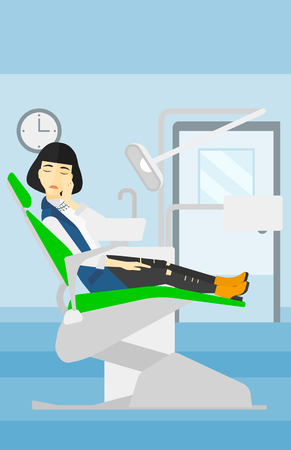1. Understanding Anxiety and Its Triggers
Anxiety is a natural response to stress, but when it becomes overwhelming or constant, it can interfere with everyday life. In the United States, many people experience anxiety due to busy schedules, work pressures, social demands, and even unexpected events like traffic jams or financial worries. Understanding what anxiety is and what causes it can help you find immediate relief with simple breathing exercises and relaxation techniques.
What Is Anxiety?
Anxiety is your body’s way of reacting to stress or perceived danger. It often feels like nervousness, worry, or fear. Sometimes anxiety shows up as physical symptoms such as a fast heartbeat, shallow breathing, or muscle tension.
Common Causes of Anxiety in American Life
| Trigger | Examples in Everyday Life |
|---|---|
| Work Stress | Tight deadlines, performance reviews, job insecurity |
| Social Situations | Public speaking, meeting new people, social media pressure |
| Health Concerns | Doctor visits, medical bills, waiting for test results |
| Family Responsibilities | Parenting challenges, caring for aging relatives |
| Financial Worries | Paying bills, student loans, unexpected expenses |
| Everyday Uncertainties | Traffic jams, running late, sudden changes in plans |
Why Immediate Relief Strategies Matter
When anxiety strikes during your day—whether you’re at work, stuck in traffic, or at home—it’s important to have tools that help you calm down quickly. Breathing exercises and relaxation techniques are practical because they can be done almost anywhere and anytime. By learning these methods, you give yourself a chance to reset and handle stressful moments better. This not only helps you feel more comfortable in the moment but also supports your overall well-being in the fast-paced American lifestyle.
2. The Science Behind Breathing Exercises
Understanding how breathing exercises work can help you get the most out of these techniques, especially when you’re feeling anxious. Anxiety triggers your body’s “fight or flight” response, which causes faster breathing, a racing heart, and tense muscles. This is your sympathetic nervous system kicking in to protect you from danger—even if there’s no real threat.
How Focused Breathing Impacts Your Body
When you practice focused breathing, you activate your parasympathetic nervous system, often called the “rest and digest” system. This helps slow your heart rate, lower your blood pressure, and relax your muscles. In short, it tells your brain and body that it’s safe to calm down.
What Happens in Your Nervous System?
| Action | Nervous System Response | Result |
|---|---|---|
| Rapid, shallow breathing (anxiety) | Sympathetic nervous system activated | Increased heart rate, muscle tension, alertness |
| Slow, deep breathing (relaxation) | Parasympathetic nervous system activated | Calmer mind, reduced stress hormones, relaxed body |
The Science—Made Simple
Research shows that even just a few minutes of slow, intentional breathing can reduce anxiety symptoms quickly. Deep breathing increases oxygen flow to the brain and signals your body to let go of stress. Studies from American medical centers like Mayo Clinic and Harvard Health have found that these techniques are effective for people dealing with everyday stress as well as more intense anxiety.
Why Does This Matter?
If you know how and why breathing exercises work, it’s easier to trust the process and stick with it. Breathing techniques are free, always available to you, and can be practiced almost anywhere—from your car to your office or even while waiting in line at Starbucks. The next time anxiety strikes, remember that a few mindful breaths can make a real difference—not just emotionally but physically too.

3. Popular Breathing Techniques for Instant Calm
Box Breathing (Square Breathing)
Box breathing is a simple technique used by everyone from athletes to Navy SEALs to quickly calm the mind and body. It’s easy to remember and can be done anywhere—at home, at work, or even in your car.
How to Do Box Breathing:
| Step | Action | Time (Seconds) |
|---|---|---|
| 1 | Inhale slowly through your nose | 4 |
| 2 | Hold your breath | 4 |
| 3 | Exhale slowly through your mouth | 4 |
| 4 | Hold your breath again | 4 |
Tip: Repeat this cycle for 3-5 rounds, or as needed until you feel calmer.
4-7-8 Breathing Technique
The 4-7-8 method is a favorite for people dealing with anxiety or trouble falling asleep. It helps slow your heart rate and signals your nervous system to relax.
How to Do 4-7-8 Breathing:
- Sit comfortably with your back straight.
- Breathe in quietly through your nose for a count of 4 seconds.
- Hold your breath for a count of 7 seconds.
- Exhale completely through your mouth, making a soft whooshing sound, for 8 seconds.
- Repeat the cycle up to four times.
Diaphragmatic (Belly) Breathing
This technique encourages full oxygen exchange, which can slow your heartbeat and lower blood pressure. It’s perfect for quick relief during stressful moments or as part of a daily routine.
How to Practice Diaphragmatic Breathing:
- Sit or lie down comfortably. Place one hand on your chest and the other on your belly.
- Breathe in slowly through your nose, letting your belly push against your hand. Your chest should remain still.
- Purse your lips and exhale slowly through your mouth.
- Aim for 6-10 slow breaths per minute for 10 minutes.
When to Use These Techniques?
| Situation | Recommended Technique(s) |
|---|---|
| At work before a meeting or presentation | Box Breathing, 4-7-8 Breathing |
| Trouble falling asleep at night | 4-7-8 Breathing, Diaphragmatic Breathing |
| Panic or anxious feelings in public places | Box Breathing, Diaphragmatic Breathing |
| Tense moments at home with family or kids | All techniques above are suitable! |
You can use these breathing exercises anytime you need quick anxiety relief. With just a few minutes and some practice, you’ll find it easier to regain control and feel more at ease—wherever you are.
4. Effective Relaxation Techniques
Practical Strategies for Immediate Anxiety Relief
When anxiety hits, having a few easy-to-use relaxation techniques in your back pocket can make all the difference. Here are some of the most effective methods that fit seamlessly into the busy lifestyles of many Americans.
Progressive Muscle Relaxation (PMR)
PMR is a simple technique where you tense and then relax different muscle groups in your body. This helps release physical tension and sends signals to your brain that it’s time to calm down. Here’s how you can do it at home or even at your desk:
| Step | What to Do |
|---|---|
| 1. Find a Comfortable Spot | Sit or lie down somewhere quiet. |
| 2. Start With Your Feet | Tense the muscles in your feet for five seconds, then relax. |
| 3. Move Upward | Repeat with calves, thighs, stomach, arms, shoulders, and face. |
| 4. Breathe Deeply | Inhale while tensing, exhale while relaxing each group. |
Grounding Exercises
If you feel anxious or overwhelmed, grounding exercises can help bring your mind back to the present moment. A popular method is the “5-4-3-2-1” technique, which uses your senses to anchor you in reality:
- 5 things you can see: Look around and name five objects you can see.
- 4 things you can touch: Notice textures—your clothing, chair, or anything nearby.
- 3 things you can hear: Listen for background noises like birds, traffic, or a clock ticking.
- 2 things you can smell: Notice scents in the air or grab something nearby with a scent.
- 1 thing you can taste: Pop a mint in your mouth or focus on the aftertaste of coffee or gum.
Mindful Visualization
This technique involves closing your eyes and picturing a peaceful place—like a beach, forest, or anywhere you feel safe and relaxed. Mindful visualization lets your mind take a break from stress by focusing on calming images and sensations. Try this when waiting in line or during a quick break at work.
Quick Tips for Fitting Relaxation Into Your Day
- Sneak in PMR while watching TV or before bed.
- Try grounding exercises during stressful commutes or meetings.
- Use visualization during lunch breaks or right before an important call.
These practical strategies are easy to learn and work well for people with busy schedules. They offer instant relief from anxiety and can be done almost anywhere—at home, at work, or on the go.
5. Tips for Making These Techniques a Habit
Start Small and Build Consistency
Getting started with breathing exercises and relaxation techniques doesn’t have to be overwhelming. Begin with just a few minutes each day, perhaps after you wake up or before bedtime. Gradually increase your time as you become more comfortable. The key is to be consistent—daily practice will help make these techniques part of your routine.
Incorporate Technology for Support
Many Americans find it easier to stick to new habits when they use technology. There are plenty of apps designed for mindfulness, guided breathing, and relaxation. Some popular options include:
| App Name | Main Feature | Platform |
|---|---|---|
| Calm | Guided breathing & meditation sessions | iOS/Android |
| Headspace | Mindfulness reminders & relaxation guides | iOS/Android |
| Breathe2Relax | Breathing exercise tutorials & stress tracking | iOS/Android |
| Insight Timer | Large library of free guided meditations | iOS/Android |
You can set reminders in these apps or on your phone to prompt you to practice at the same time every day.
Create Triggers in Your Daily Routine
Tie your breathing or relaxation exercises to activities you already do—like brushing your teeth, taking a lunch break, or winding down before bed. This makes it easier to remember and stick with the habit.
Sample Daily Routine Integration Table:
| Time of Day | Activity Trigger | Suggested Exercise Duration |
|---|---|---|
| Morning | After waking up/before coffee | 2-5 minutes deep breathing |
| Noon/Lunch Break | Before eating lunch at work/school/home | 3 minutes body scan relaxation or box breathing |
| Evening/Bedtime | Right before sleep/after brushing teeth | 5 minutes progressive muscle relaxation or guided meditation audio from an app |
Tap Into Community Resources and Social Support
If you enjoy group activities, check out local community centers, YMCAs, or wellness programs that offer yoga, meditation, or group relaxation classes. Many American workplaces also provide employee wellness resources—look into what’s available through your job or local organizations. Sharing your goals with friends or family can add accountability and encouragement.
Add Variety and Make It Enjoyable
If one technique feels boring over time, switch things up! Try different breathing patterns (like 4-7-8 or box breathing), listen to relaxing music, or use aromatherapy during your sessions. The more enjoyable you make it, the more likely you’ll stick with it long-term.
Your Action Plan: Quick Checklist
- Select one easy exercise to start today.
- Download a supportive app that fits your style.
- Add reminders to your phone/calendar.
- Tell a friend or join a class for support.
- Tweak your approach as you go—keep it fun and flexible!
Making breathing exercises and relaxation techniques part of your daily life can lead to real benefits for anxiety relief. With these tips and tools tailored to American routines, you’re set up for success.


